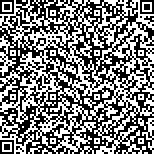Archive > Volume 40 Issue 4 > 2014,40(4):466-472. DOI:10.7519/j.issn.1000-0526.2014.04.009 Prev Next
Research on Forecast of Traffic Weather Safety Index for Jingjintang Highway
- Article
- Figures
- Metrics
- Preview PDF
- Reference
- Related
- Cited by
- Materials
Abstract:
Based on the analysis of the monthly and daily traffic accidents rate of per 10 000 vehicle (TAR) and meteorological elements over two years (01/01/2007-30/01/2009) observed from Jingjintang Highway, the correlation analysis is done on diurnal variation between mean TAR and integrated meteorological parameter (IMP). The results show that the diurnal variation of accident in each month usually has two peaks. The mainly peak occurs during 05:00-07:00 BT, and the second peak during 21:00-23:00 BT. The maximum annual average accident can reach to 1.8 TAR. The mean hourly TAR in each month has some relationship in parabola, exponential, or linear with the IMP that means the TAR has the same trend with IMP. To improve traffic weather service for highway, a four level traffic weather risk and safety index is set up. The simulated forecast of diurnal IMP of two months is applied by utilizing a WRF based NWP outputs, whose mean monthly accuracy is 62.5% and 95.8% respectively. This result provides reasonable basis for highway safety management and has wide spread application value for highway traffic weather service in Huabei Region.
Keywords:
Project Supported:
Clc Number:


Mobile website









